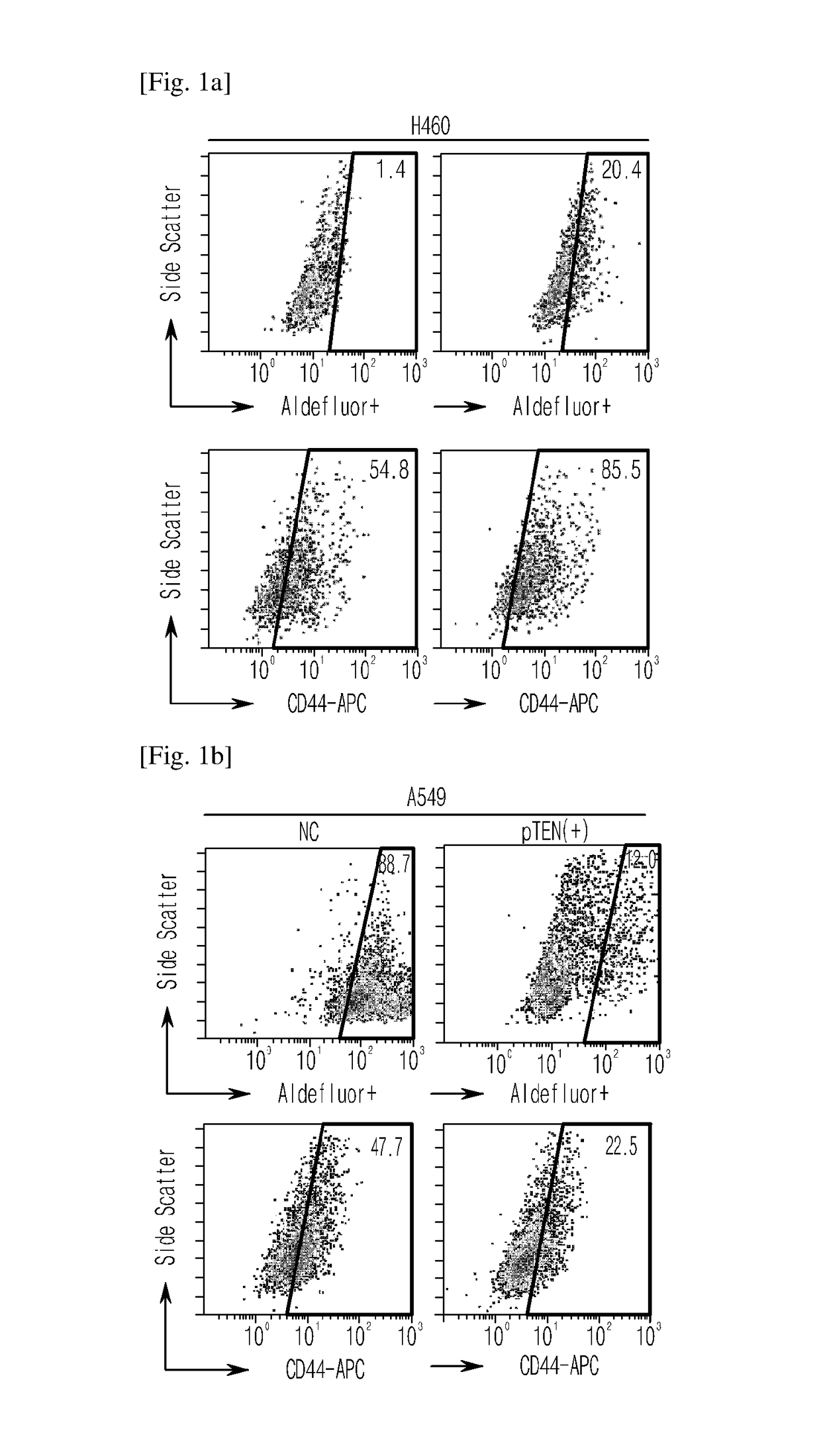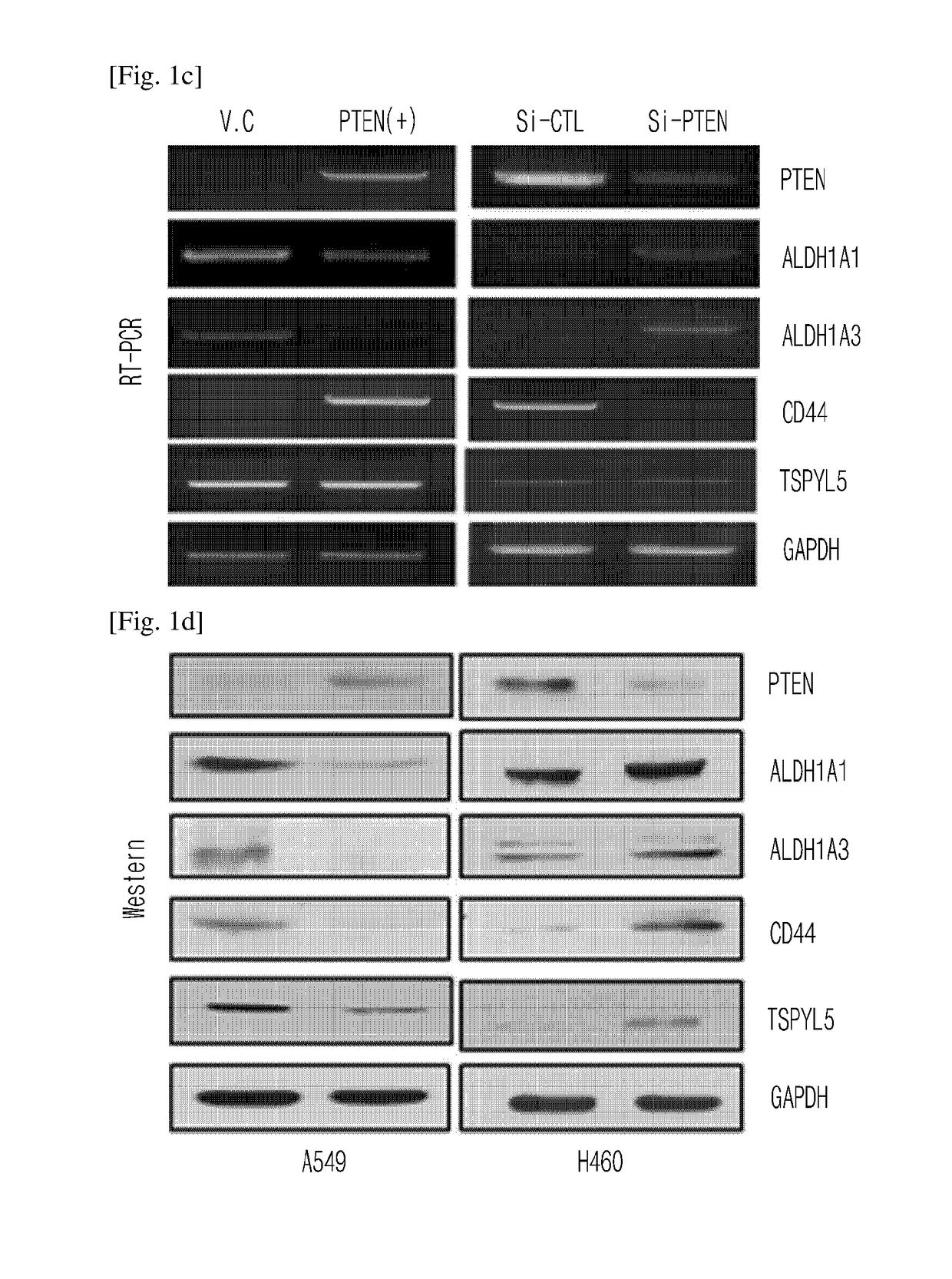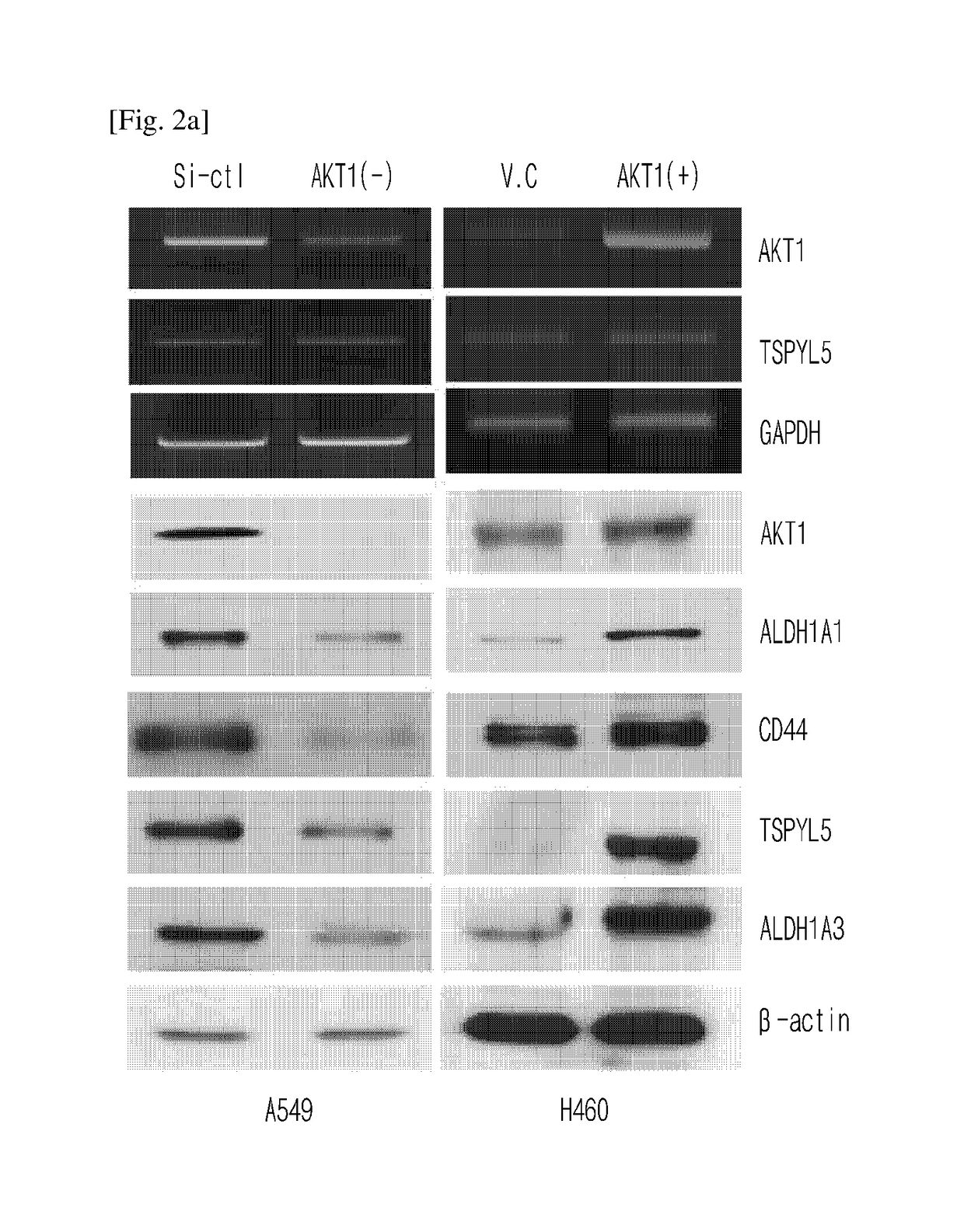Method for regulating cancer stem cell growth by inhibiting phosphorylation of 120th threonine residue of TSPYL5 protein, a composition containing the peptide sequence functioning to inhibit the phosphorylation and a use thereof
a technology of tspyl5 and phosphorylation, which is applied in the direction of peptide/protein ingredients, peptide sources, drug compositions, etc., can solve the problems of poor cancer prognosis, increased p53 degradation, and still technical limit in developing an inhibitor of radiation-sensitive or radiation-resistant cancer stem cells, so as to inhibit growth and metastasis
- Summary
- Abstract
- Description
- Claims
- Application Information
AI Technical Summary
Benefits of technology
Problems solved by technology
Method used
Image
Examples
example 1
ion of Over-Expressing Cells
[0081] Construction of Vectors Over-Expressing TSPYL5, PTEN, and AKT1 Genes
[0082]The cells over-expressing TSPYL5, PTEN, and AKT1 genes were constructed as follows. First, the TSPYL5, PTEN, and AKT1 genes were obtained by reverse transcription from the mRNA originated from the lung cancer cell line A549 or H460.
[0083]Particularly, 1 ml of trisol was added to the lung cancer cell line A549 or H460, which was well mixed for 5 minutes. 200 μl of chloroform reagent was added thereto, which was well mixed again for 5 minutes. The mixture was centrifuged at 4° C. for 10 minutes. 200 μl of the supernatant was transferred into a new tube. 500 μl of isopropanol was added thereto, followed by reaction for 10 minutes at room temperature. Centrifugation was performed again at 4° C. to eliminate the supernatant. The precipitate was washed with DEPC solution containing 75% ethanol, followed by centrifugation again to eliminate the supernatant. The precipitate was disso...
example 2
n of the Expressions of TSPYL5, AKT, and PTEN
[0091]The following experiment using siRNA was performed to inhibit the intracellular expressions of TSPYL5, AKT, and PTEN.
[0092]Particularly, the expressions of TSPYL5 and AKT were inhibited in A549 cells, and the expression of PTEN was inhibited in H460 cells. 2×105 cells were transfected with 100 nM of each gene specific siRNA and Scrambled Stealth TM RNA molecule (negative control: siControl) in penicillin-streptomycin solution free medium using Lipofectamine RNAi MAX (Invitrogen) according to the manufacturer's protocol. After 4˜6 hour reaction, the medium was replaced with the medium supplemented with 100 units / ml of penicillin-streptomycin, followed by culture for 72 hours.
[0093]
TABLE 3SEQ.ID.PrimerSizeSequence(5′-3′)NOsiTSPYL525merAAAGGUAGAACUGCAAGG17Invitro-GAUUGGGgenCCCAAUCCCUUGCAGUUC18UACCUUUsiPTEN21merGAUAUCAAGAGGAUGGAU19BioneerU(dTdT)AAUCCAUCCUCUUGAUAU20C(dTdT)siAKT21merGACUGACACCAGGUAUUU21BioneerU(dTdT)AAAUACCUGGUGUCAGUC22(d...
experimental example 1
TEN on TSPYL5 Expression
[0095] Changes in the Expressions of ALDH and CD44 According to the Over-Expression or Inhibition of PTEN
[0096]The expressions of the cancer stem cell markers ALDH1 and CD44 were measured by flow cytometry after ALDEFLUOR staining and CD44 antibody staining to investigate the changes of cancer stem cell characteristics according to the over-expression or inhibition of PTEN.
[0097]Particularly, A549 cells (VC), PTEN over-expressing A549 cells (PTEN(+)), H460 cells (si-CTL), and PTEN suppressed H460 cells (si-PTEN) were added with 0.5 ml of ALDEFLUOR assay buffer, resulting in 1×106 cell / ml of mixture. 5 μl of the lysed cells and the activated ALDEFLUOR substrate was loaded respectively in two empty tubes. 500 μl of the mixture was loaded in the control tube. 5 μl of DEAB (diethylaminobenzaldehyde), the ALDH1 activity inhibitor, was added only to the control. Then, reaction was induced at 37° C. for 30 minutes. Centrifugation was performed to eliminate the super...
PUM
| Property | Measurement | Unit |
|---|---|---|
| weight | aaaaa | aaaaa |
| weight | aaaaa | aaaaa |
| pH | aaaaa | aaaaa |
Abstract
Description
Claims
Application Information
 Login to View More
Login to View More - R&D
- Intellectual Property
- Life Sciences
- Materials
- Tech Scout
- Unparalleled Data Quality
- Higher Quality Content
- 60% Fewer Hallucinations
Browse by: Latest US Patents, China's latest patents, Technical Efficacy Thesaurus, Application Domain, Technology Topic, Popular Technical Reports.
© 2025 PatSnap. All rights reserved.Legal|Privacy policy|Modern Slavery Act Transparency Statement|Sitemap|About US| Contact US: help@patsnap.com



